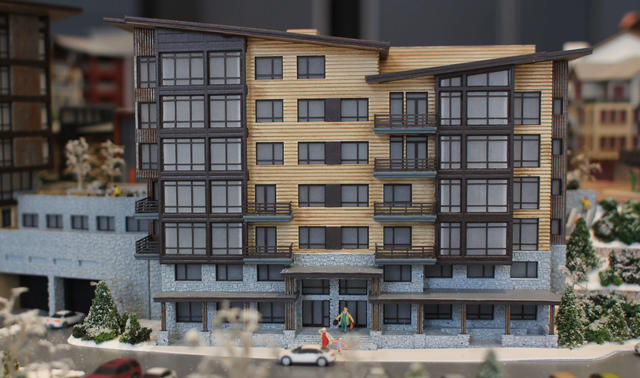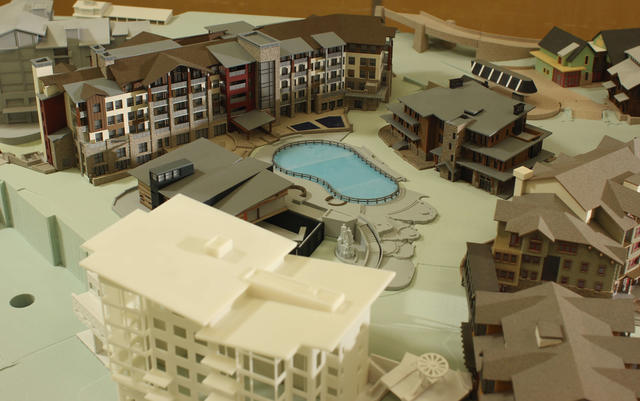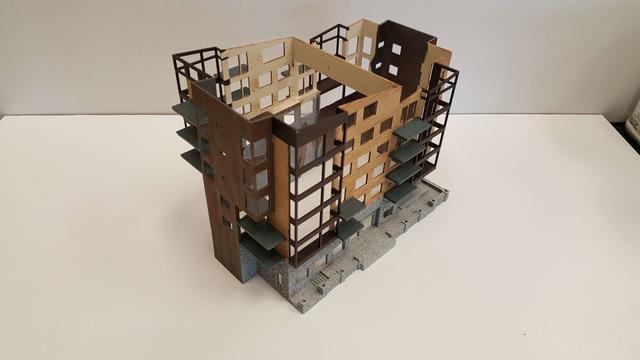HOT
 Metal Technology (MTI) forges new path with meta…
Metal Technology (MTI) forges new path with meta… Reaching the Outer Limits with GibbsCAM and the …
Reaching the Outer Limits with GibbsCAM and the … Planetary Resources Uses 3D Printed Casting Patt…
Planetary Resources Uses 3D Printed Casting Patt… Rapid Part Replacement Ready for Take Off?
Rapid Part Replacement Ready for Take Off? Bushnell Verifies High Detail Optics Designs wit…
Bushnell Verifies High Detail Optics Designs wit… Birdstone Delivers Schweppes Redesign with 3D Sy…
Birdstone Delivers Schweppes Redesign with 3D Sy… 3D ProMetal Optimizes Next-Gen Medical Component…
3D ProMetal Optimizes Next-Gen Medical Component…
LGM Delivers Large Scale Appearance Model in Record Time with 3D Systems On Demand
When LGM won its bid to deliver the marketing model for Snowmass Base Village in Snowmass, CO, it was signing on for a high profile job complete with high pressure. The customer, East West Partners, needed the 10-foot by 4-foot interactive appearance model to be ready and installed in time for the high traffic 2017 holiday season. Complete with tablet-controlled LED lighting wired to correspond to individual units, the final model would be an integrated part of the sales and marketing experience. “Thanksgiving and Christmas are peak times in Snowmass, so if we missed that delivery, our customers would miss potential sales and we couldn’t have that on our hands,” says Jason Berghauer, Senior Projects Manager for LGM. To ensure timeliness without sacrificing quality, LGM worked with 3D Systems On Demand to outsource model production with high quality SLA printing.

Using 3D Systems On Demand gave LGM access to high resolution SLA printing technology as well as 3D Systems’ high capacity machines and post-processing expertise. “Taking the project parameters into consideration, I don’t think we could have successfully completed this project without outsourcing the 3D printing to 3D Systems,” Berghauer says.
Tight deadline for highly detailed display
LGM is one of the nation’s leading full service architectural model shops and has built its success by producing models for signature projects all over the world. Given the quality and timeline requirements for the Snowmass Base Village project, LGM quickly identified SLA printing as the best, most expedient approach for the 1 inch = 16 feet model. “Because of the scale we used, we needed a 3D printing technology with tight tolerances,” says Berghauer. “Due to some of the building sizes, we also needed access to larger machines.” As a repeat collaborator with 3D Systems On Demand, LGM got in touch with the 3D printing services provider for help bringing the appearance model to life with SLA printing.

According to Patrick Fleege, Senior Project Manager at LGM, the tight tolerances achievable with SLA allowed LGM to deliver an intricately detailed model that matched client expectations. “Without SLA, the level of detail and surface finish that we ultimately delivered would only have been achievable with a manual process,” Fleege says.
With a traditional approach, textures and details would have been added via laser-cutting; using a digital approach with 3D modeling and 3D printing, LGM was able to significantly reduce the manual labor required to achieve the same outcome. LGM’s modeling team applied digital texture stamping to the CAD files to give the final prints the appearance of stone, brick, or siding as required.
The SLA process was beneficial for fine details and also offered the final construction greater durability through the available material options. “The ABS-like properties of 3D Systems’ SLA printing allowed us to go smaller on some of the detail elements while giving us stronger parts with better elasticity than we would otherwise get,” says Berghauer. 3D Systems’ SLA can consistently produce features as small as 0.1mm or 0.004in, depending on geometry, orientation and build mode. The ability to access larger build platforms through 3D Systems On Demand was also beneficial to LGM as some of the final model dimensions were as large as 20 inches by 18 inches (508mm x 457mm).
For the scale and detail of this project, LGM says no other architectural modeling methodology would have been feasible to achieve quality expectations within the time allotted. Yet speed wasn’t the only advantage: Berghauer says the decision to use 3D printing also helped reduce the final project cost by roughly one-third as compared to a traditional laser-cut model.
Easy online ordering with fast turnaround
In order to deliver realistic architectural models, LGM typically layers its models to mimic the dynamic façades we are accustomed to seeing in everyday life. Starting with client provided CAD data, LGM relied on its extensive experience in processing architectural geometry to separate out certain detail elements as individual parts for printing. These assemblies included items such as stone piers and column work, as well as what LGM calls the “light core.” The light core is comprised of interior building shells and exterior coverings with layers in between for window mullions that are backed with frosted acrylic. LGM designed and installed an interactive, tablet controlled lighting system with help from Australia’s Lightswarm. With all the building shells, exteriors, and landscaping features accounted for, the total 3D printed part count came to roughly 250 individual pieces.

For upfront pricing, LGM used 3D Systems’ online quoting system, which gives users the ability to preview part cost based on the technology, material, scale and finish of choice. This straightforward functionality allowed LGM to calculate an accurate estimated cost early on in the process. “We had the capability to upload a file to assess what the rough costs were going to look like and then work that into the overall estimation,” says Berghauer. Once 3D Systems was officially selected as its 3D printed parts supplier, LGM was connected to a dedicated 3D Systems On Demand specialist who was available to answer questions and directly provide quotes for larger files.
High quality 3D prints integrate seamlessly with in-house finishing
The parts integrated seamlessly into LGM’s downstream process, which included masking, airbrushing, painting and assembly. “Receiving parts that were ready to go was a great time savings for us, and was one of the great things that helped us deliver this project in the time we had,” Berghauer added.

While part orders were being printed by 3D Systems, LGM capitalized on its freed up schedules to hit other project milestones and do more in less time. Berghauer says LGM will typically use 3D printing as a means to provide better service, shorter turnaround times, and better, more cost-effective products. In the case of this particular project, however, 3D printing played a more critical role: “In the end, our ability to outsource SLA 3D printing made it possible to earn this project,” says Fleege. “Using 3D Systems’ On Demand services allowed us to compete and win.”






































